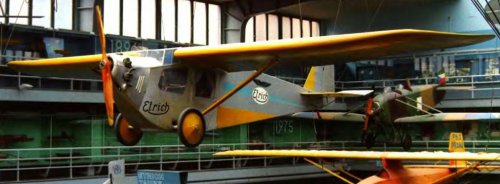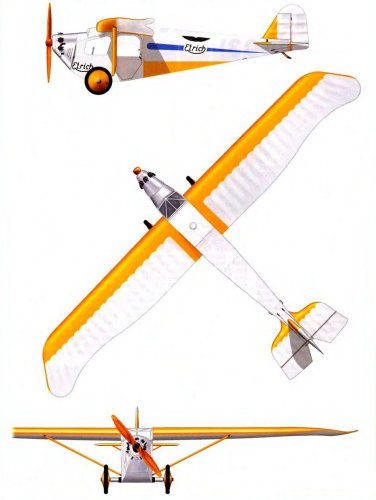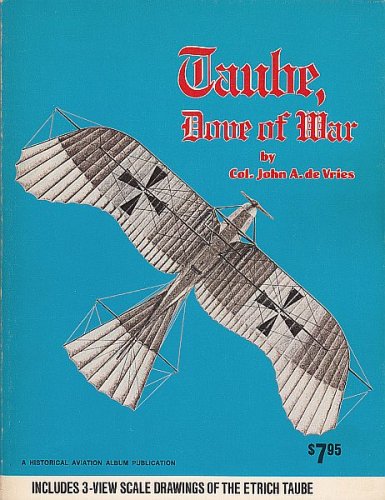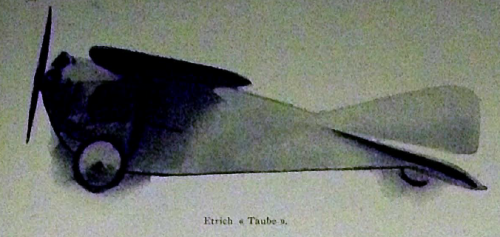- Joined
- 26 May 2006
- Messages
- 33,464
- Reaction score
- 13,505
Hi,
Austrian Igo Etrich (1879-1967) was experimented in aeronautics from 1899. After
working with engineer Franz Wels he made a tailless glider with backswept wings in
1907.
1909 Etrich "Nurflügel" (Only Wings) tractor monoplane
1909 Etrich Taube (Dove) tractor monoplane
1909 Etrich-Wels "Praterspatz" (Prater sparrow) tractor monoplane
1910 Etrich II "Taube" (Dove) 2-seater tractor monoplane
1910 Etrich II modified "Taube" (Dove) tractor monoplane
1910 Etrich III "Möve" (Seagull) tractor monoplane
1910 Etrich IV "Taube" (Dove) tractor monoplane
1910 Etrich V "Taube" (Dove) tractor monoplane
1910 Etrich VI "Taube" (Dove) tractor monoplane
1911 Etrich "Etrichapparat" monoplane
1911 Etrich IV "Manövertaube" (Military Dove) Type B military 2-seater monoplane
1911 Etrich VII "Renntaube" (Racing Dove) 3-seater racing monoplane
1912 Etrich VIII "Luft-Limousine" ("Air Limousine") 4-seater high wing monoplane
1912 Etrich IX "Schwalbe" ("Swallow") monoplane
1912 Etrich X ----?
1912 Etrich XI ----?
1912 EFW Etrich XII "Rennapparat" ("Racing Machine") 2-seater bomber monoplane
1912 Etrich "Manövertaube" ("Military Dove") Fype F 2-seater military monoplane
1913 EFW Etrich Taube Type 1913 2-seater bomber monoplane
1914 Type A-1 & A-2 were a military airplanes
Who can add ?
Austrian Igo Etrich (1879-1967) was experimented in aeronautics from 1899. After
working with engineer Franz Wels he made a tailless glider with backswept wings in
1907.
1909 Etrich "Nurflügel" (Only Wings) tractor monoplane
1909 Etrich Taube (Dove) tractor monoplane
1909 Etrich-Wels "Praterspatz" (Prater sparrow) tractor monoplane
1910 Etrich II "Taube" (Dove) 2-seater tractor monoplane
1910 Etrich II modified "Taube" (Dove) tractor monoplane
1910 Etrich III "Möve" (Seagull) tractor monoplane
1910 Etrich IV "Taube" (Dove) tractor monoplane
1910 Etrich V "Taube" (Dove) tractor monoplane
1910 Etrich VI "Taube" (Dove) tractor monoplane
1911 Etrich "Etrichapparat" monoplane
1911 Etrich IV "Manövertaube" (Military Dove) Type B military 2-seater monoplane
1911 Etrich VII "Renntaube" (Racing Dove) 3-seater racing monoplane
1912 Etrich VIII "Luft-Limousine" ("Air Limousine") 4-seater high wing monoplane
1912 Etrich IX "Schwalbe" ("Swallow") monoplane
1912 Etrich X ----?
1912 Etrich XI ----?
1912 EFW Etrich XII "Rennapparat" ("Racing Machine") 2-seater bomber monoplane
1912 Etrich "Manövertaube" ("Military Dove") Fype F 2-seater military monoplane
1913 EFW Etrich Taube Type 1913 2-seater bomber monoplane
1914 Type A-1 & A-2 were a military airplanes
Who can add ?




